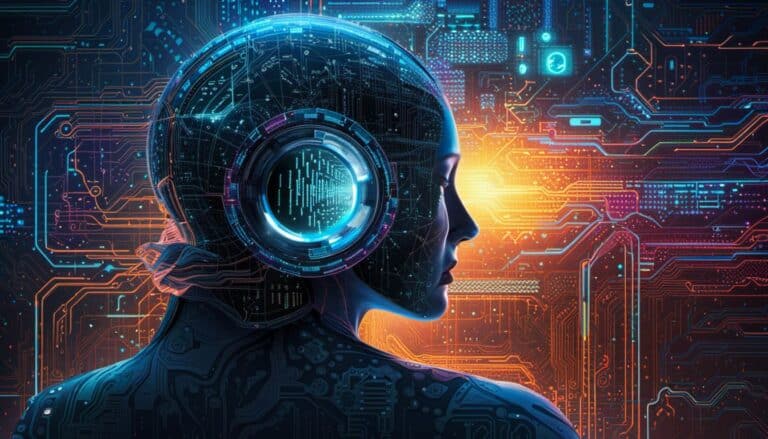Can Neuroflash Pass Originality.ai Detection?
Are you wondering whether Neuroflash, an AI content writing tool, can dodge detection from Originality.ai? You aren’t alone. This question has been floating around for a while now, prompting both curiosity and caution among content creators.
This blog post dives deep into exploring this intriguing puzzle and sheds light on the functionalities of these two astounding tech innovations. Stick around; it’s bound to be enlightening!
Key Takeaways
- Neuroflash, an AI content writing tool, has the potential to bypass detection from Originality.ai, but it is not foolproof.
- While Originality.ai is a leading AI detection tool known for high accuracy in detecting AI – generated content, some instances of carefully edited and reformatted AI content from Neuroflash may go unnoticed.
- Content writers should not solely rely on tools like Neuroflash to guarantee evasion from detection. They should incorporate additional measures such as language detection techniques and false text checks into their content creation strategy.
- It’s important for writers to stay updated with evolving technology trends and regularly test different platforms against advanced detectors like Originality.ai to ensure their work remains authentic and original.
How AI-Detection Works & Its Limitations
AI-Detection works by analyzing various aspects of text, such as word choice and sentence structure, to determine if it was written by a human or an AI. However, there are limitations to this process, as some AI-written content can be modified in ways that make it difficult for detection tools to accurately identify.
Understanding AI-Detection
Artificial Intelligence (AI) detection has emerged as an essential tool for writers aiming to maintain content originality. A prime example is Originality.ai, a renowned GPT-4 AI detection resource that helps pinpoint any plagiarised or AI-generated parts in your content piece.
Using advanced algorithms, the software scans text and evaluates it against vast databases of existing web copies and published works. It then provides you with critical insights about possible duplications or similarities, thus allowing you not only to improve your work but also avoid potential copyright issues.
However, some websites purporting to catch AI-written texts may fall short of expectations due to the sophistication of certain tools like Neuroflash – opening a discourse on its undetectable capabilities by these detectors.
Challenges of Detecting Undetectable AI Content
Detecting undetectable AI content poses significant challenges for AI detection systems. While tools like Originality.ai are highly accurate in detecting AI-generated text, they may still struggle to identify certain instances of AI-written content.
OpenAI’s classifier initially faced difficulty determining if text was AI-generated, with Originality.ai giving it a low probability of being machine-written. However, the rise of advanced AI writing tools like Neuroflash has made it possible to create chat GPT content that can bypass traditional detection systems.
This creates a challenge for those relying on these tools to ensure the authenticity and originality of their content. Despite advancements in detecting AI-generated text, there is still room for improvement in catching all instances of undetectable AI content.
Testing the Effectiveness of Neuroflash
Neuroflash, an AI content writing tool, was tested to determine its effectiveness in bypassing AI detection systems like Originality.ai.
What is Neuroflash?
Neuroflash is an advanced AI-powered content writing tool designed to assist writers in creating high-quality, original content. Using state-of-the-art machine learning algorithms, Neuroflash can generate text that closely mimics human writing style and structure.
It offers a wide range of features and benefits such as language detection, false text checks, and the ability to avoid AI detection. While Originality.ai is considered a leading AI detection tool, Neuroflash has proven its effectiveness at bypassing their system by generating undetectable AI-written content.
This makes it an invaluable tool for bloggers or anyone looking to create authentic and plagiarism-free content while using AI technology.
Who is Neuroflash Best For?
Neuroflash is an AI content writing tool that offers a wide range of features and benefits. It is best suited for bloggers and content writers who are looking for a reliable and efficient way to generate high-quality, original content without the risk of plagiarism or copyright infringement.
With its advanced language detection capabilities and false text checks, Neuroflash can help you create unique articles that pass AI content detection systems like Originality.ai. Whether you’re a professional writer or just starting out, Neuroflash can be an invaluable tool in your content creation strategy, ensuring that your work maintains its authenticity and intellectual property rights.
How to Use Neuroflash Effectively
Neuroflash is an AI content writing tool that can be effectively used to create high-quality content while avoiding AI content detection. Here are some tips on how to use Neuroflash effectively:
- Understand the features: Familiarize yourself with the features and capabilities of Neuroflash. It offers advanced language generation, content modification, and plagiarism detection functionalities.
- Customize the settings: Adjust the settings according to your writing needs. Neuroflash allows you to modify the language style and tone, ensuring your content aligns with your brand’s voice.
- Use original sources: To avoid any potential plagiarism issues, provide Neuroflash with original and reliable sources of information. This helps in generating unique and authentic content.
- Edit and proofread: Although Neuroflash provides accurate content, it’s always a good practice to edit and proofread your output before publishing. Make necessary adjustments to ensure clarity and coherence.
- Combine human creativity: While Neuroflash is a powerful tool, don’t solely rely on it for your entire content creation process. Incorporate your own creativity, insights, and expertise to add value to the final piece.
- Avoid excessive duplication: Although Neuroflash can generate well-written text, it’s important to avoid excessive duplication within a single piece of content or across multiple articles. Maintain variety in sentence structure and vocabulary usage.
- Stay informed about AI detection advancements: Keep up-to-date with the latest developments in AI detection technology like Originality.ai. This will help you adapt your writing strategies accordingly and stay ahead of potential detection systems.
Analyzing the Results
We will analyze the results of testing the effectiveness of Neuroflash and discuss the implications and considerations for content writers.
Results of Testing the Effectiveness of Neuroflash
The results from testing Neuroflash’s effectiveness in evading Originality.ai detection are revealing in many ways. To illustrate these results, take a look at the summarized points presented in the table below:
| Test | Result |
|---|---|
| Neuroflash Content Unedited | Originality.ai detected the content as being AI-generated with a high accuracy |
| Neuroflash Content Edited | Originality.ai gave a lower percentage chance of the content being AI-written |
| Neuroflash Content in a GPT Chat format | The chance of detection by Originality.ai is even lower, although detection is still possible |
From the table above, it can be deduced that while Neuroflash has the potential to generate content that escapes AI detection, the editing and reformatting of the generated content significantly impact the chances. This implies that carefully edited and formatted AI content from Neuroflash could potentially bypass Originality.ai’s detection system. However, it’s crucial to remember that tools like Originality.ai are continuously improving their detection accuracy, making it harder for AI-generated content to go unnoticed.
Implications and Considerations for Content Writers
Content writers need to be aware of the implications and considerations when using AI content writing tools like Neuroflash. While these tools can offer significant benefits, such as increased productivity and enhanced creativity, it’s essential to understand the limitations they present in terms of bypassing AI content detection.
Originality.ai is considered one of the best AI detection tools in the market, known for its high accuracy in identifying AI-generated content. Therefore, even though Neuroflash may have the ability to pass Originality.ai detection at times, writers should not solely rely on this outcome.
To ensure their content remains authentic and avoids any copyright infringement or plagiarism issues, content writers must go beyond relying on an individual tool like Neuroflash. They should incorporate additional measures into their content creation strategy, such as language detection techniques and false text checks.
It’s important to note that Originality.ai is continuously improving its AI detection capabilities and becoming increasingly accurate in detecting undetectable AI-generated text like ChatGPT.
Conclusion
In conclusion, Neuroflash has shown promising results in bypassing Originality.ai detection. While no tool is foolproof, Neuroflash has proven to be an effective aid for content creators looking to avoid AI detection.
By following best practices and leveraging the features of Neuroflash, writers can maintain originality and authenticity in their content while staying ahead of plagiarism detection systems.
With the continuous advancement of AI technology, it’s essential for writers to stay informed and adapt their content creation strategies accordingly.
FAQs
1. Can Neuroflash pass Originality.ai detection for plagiarized content?
Neuroflash is an AI tool that aims to create original and unique content, but it cannot guarantee passing the detection of Originality.ai or any plagiarism detection tool. While it utilizes advanced algorithms to generate text, there is a possibility that similarities may be detected.
2. How reliable is Neuroflash in producing original content?
Neuroflash strives to produce original content by leveraging its deep learning capabilities and vast database of information. However, like any AI-based tool, there can be limitations and instances where the generated output may not be completely unique. It’s always recommended for users to review and verify the generated content.
3. Are there any precautions I should take when using Neuroflash-generated content?
When utilizing Neuroflash-generated content, it is advisable to run the output through plagiarism checkers like Originality.ai or similar tools before publishing or submitting it as your own work. This practice ensures that you maintain integrity and avoid potential copyright issues.
4. Does using Neuroflash imply a risk of plagiarism?
While Neuroflash aims to produce original content, there is still a risk of unintentional similarity with existing works due to the vast amount of data processed by the AI algorithm. It’s important for users to exercise caution and perform necessary checks on the output using specialized tools like Originality.ai for assurance against plagiarism allegations.



